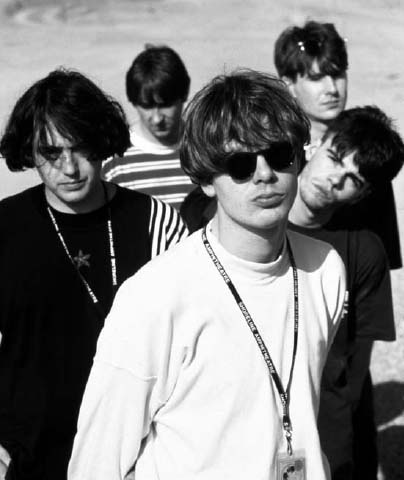The Encyclopedia of Dead Rock Stars (185 page)
Read The Encyclopedia of Dead Rock Stars Online
Authors: Jeremy Simmonds

Sunday 28
Margie Ganser Dorste
(Marguerite Ganser - Queens, New York, 4 February 1948)
The Shangri-Las

Like her identical twin sister, Mary Ann, Margie Ganser seemed to live out a tragic life not dissimilar to those of the heroines of The Shangri-Las’ many mini soap operas. Two of five New York siblings, Margie and Mary Ann lost their father when very young, finding in music an outlet for their creative desires – and in high-school friends Mary and Liz ‘Betty’ Weiss some near neighbours who shared their dreams. The four girls stumbled almost accidentally upon a sound of their own (unique in that their somewhat nasal singing voices seemed to harmonize perfectly) – not missed by Kama Sutra boss Artie Ripp when he caught a performance by the then Bon Bons in 1963. Nor was their potential overlooked by production genius George ‘Shadow’ Morton, who assembled two classic 1964 hits for the repackaged Shangri-Las in ‘Remember (Walkin’ in the Sand)’ and ‘Leader of the Pack’
( The Death Toll #1
The Death Toll #1
). Aged sixteen and seventeen, the four girls were all minors, so contracts with Red Bird had to be signed by the three surviving parents, which somehow saw The Shangri-Las – like so many other sixties groups – miss out on a small fortune in royalties in the years to come. Although the stark, melodramatic ‘I Can Never Go Home Anymore’ (1965) gave them a third Top Ten hit, the Shangri-Las subsequently found it harder to chart their records. Nonplussed by the lack of funds coming her way, the studious Margie Ganser left the Shangri-Las in 1966 to return to college.
The death of her twin sister
( March 1970)
March 1970)
inevitably hit Margie Ganser hard and, blaming the industry for the tragedy, she turned her back on music for ever. Ganser finally found happiness in her marriage to Bill Dorste in 1972, and later worked with the telecommunications giant Nynex. She died from breast cancer in hospital in New York: as per her wishes, her ashes were buried with those of her beloved twin.

The Charlatans, with Rob Collins
(left):
Just lookin’
356
July
1996
Monday 29
Jason Thirsk
(Hermosa Beach, California, 25 December 1967)
Pennywise

Named after the demonic clown in Stephen King’s novel
It,
California punks Pennywise – high-school pals Jason Thirsk (bass), Jim Lindberg (vocals), Fletcher Dragge (guitar) and Byron McMackin (drums) – emerged in 1989. Following a slow-burning 1991 debut album, Lindberg left to get married and Thirsk assumed vocals. Staunch believers in the ‘no sell out’ and ‘DIY’ ethics of punk rock, Pennywise, unlike many of their peers, refused to join a major label and thus missed out while bands like Green Day and The Offspring hit the big time. Thirsk had long had a problem with alcohol, which appeared to be exacerbated by his demotion when Lindberg returned. With fourth album
Full Circle
(1997) imminent, the bass-player upped sticks and left, committing himself to rehabilitation. Though he seemed to have beaten his addiction, Jason Thirsk relapsed and was found by his girlfriend in his yard, having apparently died from a self-inflicted gunshot wound. Pennywise continued with Randy Bradbury, who had played bass on the album.
Wednesday 31
Seagram Miller
(Oakland, California, 13 April 1969)

One of the most widely touted of the Bay Area’s new rap freestylers, Seagram Miller based many of his lyrics on his experiences in Oakland’s notorious East Side – the area he had grown up in and seen ripped apart by gang culture since the early eighties. Miller signed with the RapaLot label, and his debut,
Reality Check
(1995), was just beginning to place the rapper on a national platform when tragedy struck him down. In the early hours of the morning of 31 July, he and colleague Gangsta P were approached by a masked gunman who seemed to be tracking the latter. When the assailant opened fire, Miller threw himself across his friend – taking the full onslaught of the bullets. Gangsta P survived the attack, but Seagram Miller was mortally wounded. Understandably, hundreds showed up to pay their respects at the heroic artist’s Oakland funeral some days after the tragedy.
SEPTEMBER
Tuesday 10
Lee Baker
(Joseph Lee Baker - Memphis, Tennessee, 1944)
Lee Baker & The Agitators
Moloch
(Mudboy & The Neutrons)

Uncompromising singer/guitarist Lee Baker was a powerhouse of the Memphis-blues scene, playing on Beale Street with the likes of Mississippi Fred McDowell and Furry Lewis as a young man. His lengthy career included stints with late-sixties bluesrockers Moloch (who released one 1970 album on Enterprise), Alex Chilton, Rufus Thomas and even country stalwart Charlie Rich. Baker formed the muchloved Mudboy & The Neutrons in 1972 – the band that really should have been the making of him – finally playing the clubs with his own Agitators during the eighties and nineties.
In August 1996, a freak fire all but destroyed Baker’s home; the musician was philosophical and optimistic about it when he learned nobody had been hurt. However, by dark coincidence, just one month later, on the night of 10 September, Baker – as much through necessity as neighbourliness – was staying with his aunt, Sally McKay, at her nearby home in Horseshoe Lake, Arkansas, when a pair of teenage boys attempted to break into the house, believing it empty. Disturbed first by McKay and then Baker, the boys panicked and pulled guns on their victims. When Baker attempted to intervene, he was shot in cold blood – as was his aunt, just moments later. Abandoning their dying victims, the criminals then set fire to the house before making their getaway. Baker left a wife and three sons.
Friday 13
2Pac
(Lesane Parrish Crooks - Brooklyn, New York, 16 June 1971)
